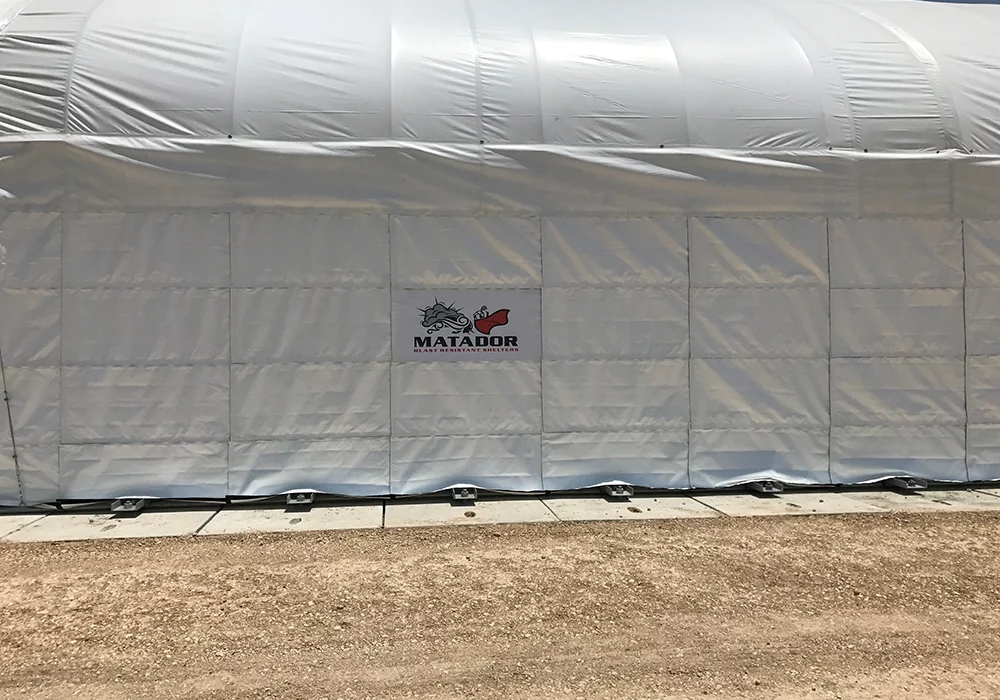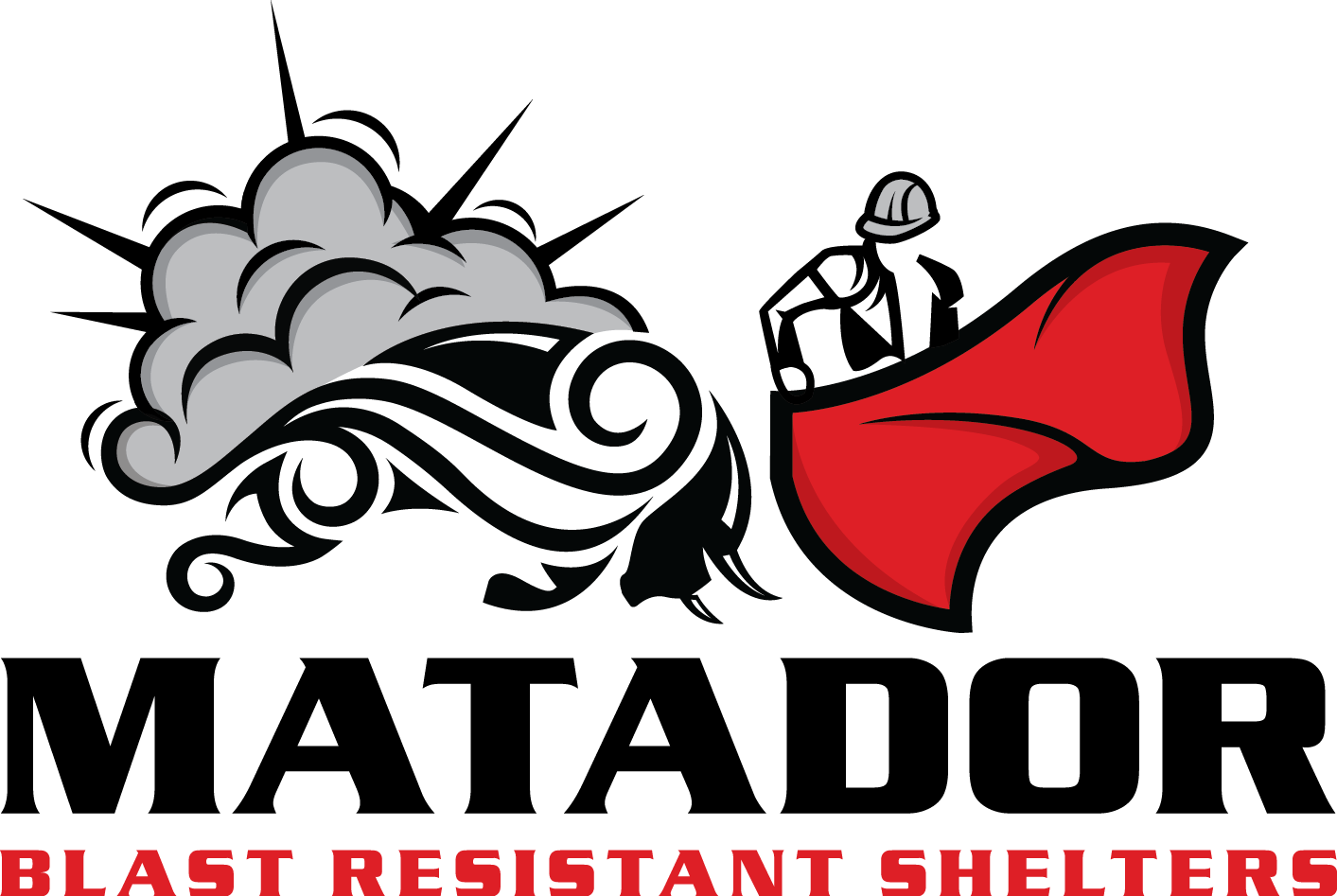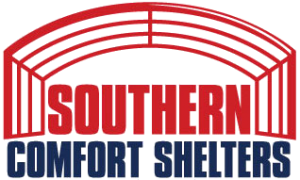
Introducing the blast resistant Matador shelter.
Our patent-pending innovative design allows worksites to have a temporary structure further within the blast zone and closer to main buildings. A blast resistant construction makes the perfect lunchroom, storage room, or fabrication shop. The Matador can withstand up to 6 PSI blast load and maintain structural integrity.
Why did we design the Matador as a blast resistant module?
Working in the industry for over three decades, we have a reputation for helping clients solve worksite problems they're enduring. We listen to all our clients and do our best to solve their hurdles for temporary shelters, lunchrooms, warehousing, and any fabric covered building use.
We had a client come to us and present their burden of needing an eatery closer to their main building and inside a blast zone. This request meant innovative solutions that would allow our shelters to pass blast zoning structure requirements for safety. We immediately began seeking the right resources and testing facilities to test our blast resistant design. We listened closely to the testing feedback throughout engineering and continued to modify for top results.
We now have a blast resistant product that many industries use further within their blast zone.
Our level of creative problem solving doesn't stop there. When the covid pandemic struck, we discovered another need. Our popular freezer strip door cannot be crossed without contacting every occupant who passes through. We designed a new double action hinge for the exits. Thus, we could eliminate the freezer strip door and the potential contact hazard to employees. Southern Comfort Shelters continues to improve all of our products as technology changes and our clients present issues they need creative solutions to.
How do blast resistant shelters work?
We have specially designed and engineered the Matador blast resistant shelter to withstand up to a 6 PSI blast rating. Verified and tested for structural integrity please reach out to our experts for more information and the results for blast overpressure. Blast overpressure is a shock wave or sudden upsurge of pressure after an explosion. The construction of the Matador is in such a way to disperse blast overpressure allowing the blast's surge to move through the building.
Specially designed tearaway panels are attached to the sides of the building.
Panels use velcro that releases freely in the event of a blast wave. The panels are firmly secured along the top edge of each panel to hold it in place for simple reattachment. Matador's construction and novel concept of breakaway paneling allow the blast to flow into the tent without significant damage. Conversely, typical residential structures collapse under 3 PSI. The blast resistant side panels withstand wind gusts up to 90 miles per hour.
The galvanized steel frame is composed in such a way to flex and absorb blast pressure without causing structural shortcomings.
At Baker Risk Testing Facilities, the Matador's blast resistance was tested with zero structural failures. The unique airflow design provides flexibility and durability to ensure your structure remains standing.
The blast resistant building maintains a solid fabric roof of waterproof vinyl material to provide traditional coverage for the inhabitants and belongings. The solid vinyl top also handles snow, sleet, hail, rain, and airborne debris.

Blast load testing results at a glance:
- Velcro secured panels disperse the blast wave into the tent to maintain structural integrity.
- Vinyl panels withstand 90 miles per hour winds.
- Lightweight galvanized steel truss structural engineering for flexure and durability.
- Structural integrity validated at both component level and full-scale testing.
- Structure meets API RP 756 guidelines.
- Three anchorage styles are available, ranging from low to significant blast capacity.
Find out more about the Matador blast resistant shelter.
Blast resistant buildings need no particular foundation and have three anchoring options. Versatile uses for temporary break rooms, lunchrooms, fabrication shops, and more are ideal for the petro and chemical industries requiring strict blast zone regulations at job sites. The Matador blast resistant shelter meets the American Petroleum Institute API RP 756 recommendations. Invest in a spacious interior with limitless sizing to accommodate 50 - 1000+ people.
Your investment is mobile and quickly moves to other locations.
Finally, the scalable design provides additional space as your business grows. These buildings also have multiple options such as HVAC, interior lighting, door options, fans, flooring, and more. Installation is speedy and efficient. See what solutions we can provide at your job site.
Southern Comfort Shelters proudly provides three distinctive fabric structures. See which style is right for you. All fabric buildings are available for purchase or rental. Each type has multiple uses. Take a moment to see what you need at your next worksite. Overcoming your job site hurdles is only a phone call away.
Blast mitigation and risk management.
Using a vinyl-covered building removes the necessity for glass windows. Glass has an approximate failure rate of only .15 PSI. Shattered glass blowing inward coving employees places employees in a blast zone at significant danger. Blast mitigation reduces possible injury from flying glass. Blast hazards show that airborne shards of broken glass moving at high velocity cause severe damage. Therefore, fabric buildings not containing glass are ideal inside a blast zone. During daylight hours, the illumination of natural light through the vinyl covering reduced the need for windows or conventional lighting sources.
The blast resistant Matador building uses a lightweight truss framework.
Supporting guy wires are fashioned inside the truss structure eliminating trip hazards and reducing space requirements for the overall footprint of the building. Further, the design of the side panels is to maintain the width of the truss framework. Hence, as panels blow inward, no employee is in danger of being struck with the whipping force of a flapping panel.
API 753 standards provide petrochemical facilities recommendations regarding temporary buildings within a blast zone.
Your site civil engineers should advise what portable structures meet the guidelines for your risk management. Your site-specific PSI ratings are determined by what is the volatile nature of products on site. In a blast zone, fire hazards are also a significant concern. Thus, vinyl is treated with a fire retardant to meet the National Fire Protection Association NFPA-701 code for fire retardant materials.
Blast wave impact on structural integrity and employee safety.
Buildings within a blast radius above all else must be able to maintain structural integrity to prevent collapse. During an emergency, a building collapsing on hundreds of employees is the last thing any employer can handle. You cannot afford to chance structural collapse when hundreds of employees are in the lunchroom or meeting area.
Safeguard your employees with a blast resistant design for temporary lunchrooms or shelters.
Employee safety concerns are first and foremost in any business owner's mind. Southern Comfort Shelters is pleased to introduce a new solution to safeguard your staff and protect your business operations.
A well-placed temporary structure is a useful asset as much as a safety measure.
For many large industries, employee safety includes having a mustering point. Large numbers of employees who need to be accounted for quickly will meet at a safety mustering point during emergencies. A temporary structure is an obvious, easy solution as it provides a gathering point and shelters employees from the elements. Structured mustering points often serve multi-purposes. The same building provides space for safety and procedural meetings, break time, or an employee lunchroom.







